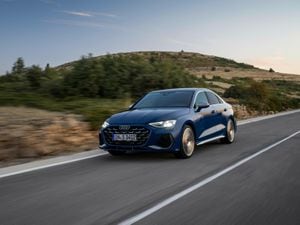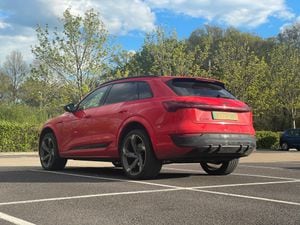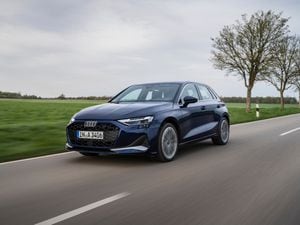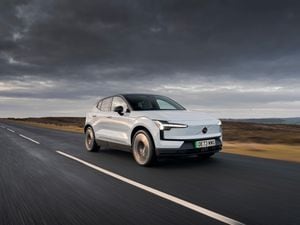First Drive: The updated Vauxhall Crossland brings extra style to this baby SUV
Vauxhall has tweaked its popular crossover, but is it for the better? Ted Welford finds out.
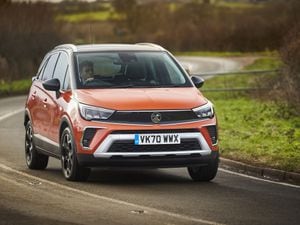
What is it?

>
Crossovers are big business for just about all car manufacturers these days – not least Vauxhall, with its high-riding Crossland X, Mokka X and Grandland X models all proving hugely popular and even stealing sales from traditional best-sellers like the Astra and Insignia.
It’s the Crossland X that’s the most affordable Vauxhall model of this kind, taking a more practical stance than the similarly-sized Mokka, which instead favours design. Yet despite the Crossland X’s impressive sales, it actually was one of the worst cars in its segment, with a poor driving experience and low-quality cabin letting the side down. Can Vauxhall improve it as part of this mid-life facelift, though?
What’s new?
One of the first things to note here is that it’s now called the Crossland – the ‘X’ part of its name being dropped in for simplicity, though there are various places where this letter still appears…
But most notable is the updated design, especially the front-end, which gets Vauxhall’s new ‘Vizor’ design – as seen on the new Mokka – that wraps the badge and headlights behind one main panel. Changes to the steering and damping also aim to improve the way the Crossland drives, too.
What’s under the bonnet?

>
The engine choice remains the same as before, with an option of naturally-aspirated and turbocharged petrols, as well as a turbodiesel – quite a rarity these days in the small crossover class.
Our test car uses the Crossland’s most powerful engine – a turbocharged three-cylinder 1.2-litre petrol that produces 128bhp and 230Nm of torque. Power is also sent to the front wheels via a six-speed manual gearbox. This allows for a 0-60mph time of 9.5 seconds and a top speed of 125mph, too.
Though the diesel is the most efficient Crossland available, this model still offers decent efficiency – Vauxhall claiming almost 50mpg, with CO2 emissions of 132g/km.
What’s it like to drive?

>
The previous Crossland X’s driving experience was really what let the side down before, and though changes here aren’t huge, they certainly improve things.
It’s now a far more accomplished cruiser at higher speeds with a more comfortable ride and more refined driving manners, while around town – where these Crosslands are more likely to be found – good visibility and light steering will tick plenty of boxes for buyers. This turbocharged petrol is also a good match, and though it can sound quite coarse at times, it delivers a decent amount of shove that enables the Crossland to get up to speed quite quickly.
While the Crossland’s lifeless steering and rolly-polly handling fall quite significantly short of the class best, these updates are certainly a step in the right direction, if not bringing the model in line with the segment rivals.
How does it look?

>
After years and years of somewhat bland designs, Vauxhall is going bold for this new Crossland. We’ve already mentioned the appealing Vizor, which helps to bring a far more modern design, but there’s also new standard-fit LED headlights and a new silver-effect front bumper that helps to give it a more rugged look.
At the rear, Vauxhall clearly feels proud enough of the new ‘Crossland’ name to have it sprawled out across the boot – in a similar way to Range Rovers do – while a new gloss-black panel around the badge and lights also gives the model a more stylish look. It’s certainly a successful facelift, to our eyes at least.
What’s it like inside?

>
Inside, Vauxhall has added some extra flair to the Crossland with new red-painted dashboard trim, while our SRi-spec test car got some appealing red stitching and dual orange stripes for the seats. But really all these small changes do is mask the fact that nothing else has really changed, with the same familiar layout and displays being used as before. That’s not all bad, with the same easy-to-use touchscreen with smartphone mirroring included, along with an ergonomic layout. But ultimately it continues to lag behind rivals when it comes to technology and quality.
More pleasingly, the Crossland is one of the more practical cars in this class. Adults can sit quite comfortably in the rear, while sliding rear seats let you adjust occupant and boot space, depending on what’s needed. The boot measures up to 520 litres with the seats slid as far forward as they go.
What’s the spec like?

>
Regardless of version, all Crosslands get a decent amount of equipment, with entry-level SE models still coming with a seven-inch touchscreen with Apple CarPlay and Android Auto, cruise control and 16-inch alloy wheels.
Our mid-spec SRi Nav delivers the best blend of value and equipment, adding a larger eight-inch touchscreen with satellite navigation, rear parking sensors and dual-zone climate control, along with styling changes like larger alloys, a contrast-colour roof and tinted windows.
There are notable omissions on the safety side of things, though, with even autonomous emergency braking being optional across the range – disappointing given it’s basically fitted to all new cars on sale now.
As for pricing, the Crossland starts from £19,355, or £21,705 for the SRi Nav. You’ll want to spend more to avoid the lethargic 83bhp engine, though, which knocks the price up further, our test car being available from £24,040.
Verdict
Vauxhall has certainly taken a step forward in the right direction with this Crossland, as it’s now better to look at and is improved behind the wheel, too. A relatively low starting price and plenty of cabin space add to the appeal too – especially for families.
But despite these changes, it still doesn’t excel in any real area and remains a middle-of-the-road choice. Given the huge range of rivals the Crossland has in this popular sector, this Vauxhall just doesn’t quite deliver. While not a bad choice, there are far better options out there – the Ford Puma and Skoda Kamiq being two far more accomplished choices.

